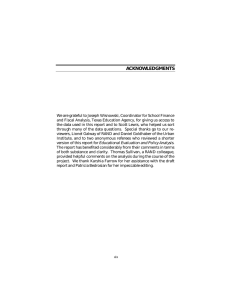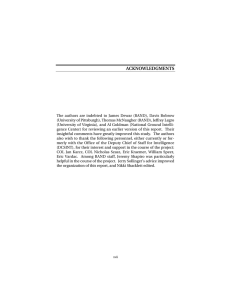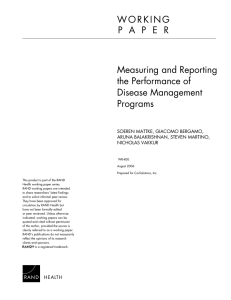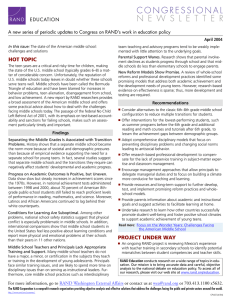Successful School Leadership FOUR WAYS TO FOSTER
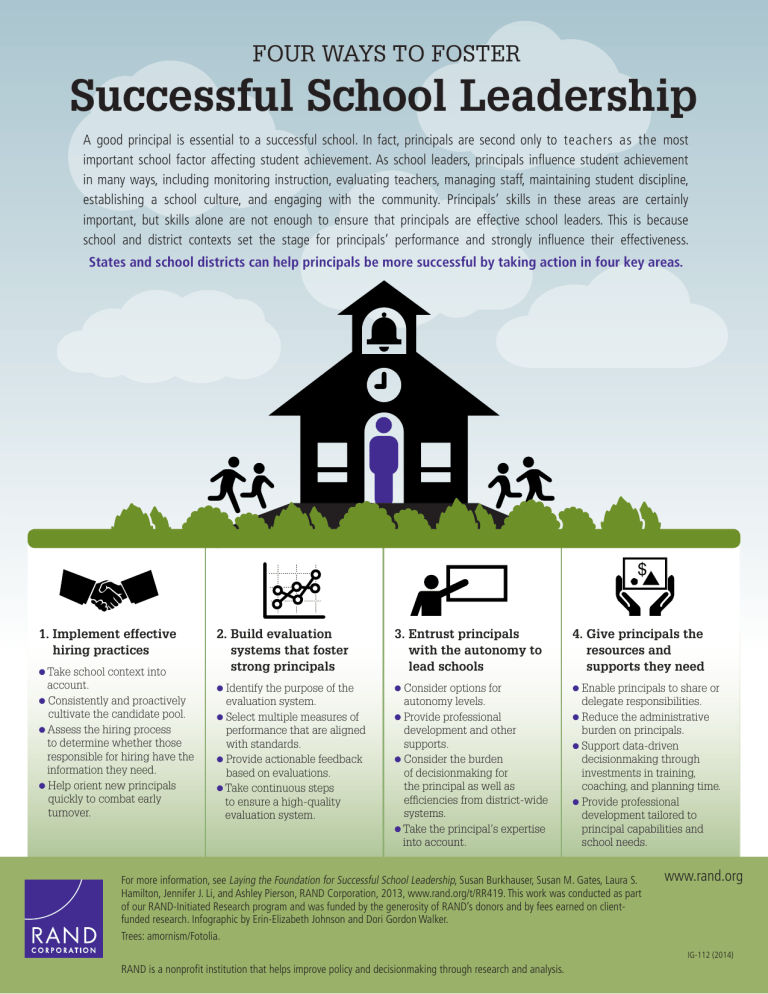
FOUR WAYS TO FOSTER
Successful School Leadership
A good principal is essential to a successful school. In fact, principals are second only to teachers as the most important school factor affecting student achievement. As school leaders, principals influence student achievement in many ways, including monitoring instruction, evaluating teachers, managing staff, maintaining student discipline, establishing a school culture, and engaging with the community. Principals’ skills in these areas are certainly important, but skills alone are not enough to ensure that principals are effective school leaders. This is because school and district contexts set the stage for principals’ performance and strongly influence their effectiveness.
States and school districts can help principals be more successful by taking action in four key areas.
$
1. Implement effective hiring practices l
Take school context into account.
l
Consistently and proactively cultivate the candidate pool.
l
Assess the hiring process to determine whether those responsible for hiring have the information they need.
l
Help orient new principals quickly to combat early turnover.
2. Build evaluation systems that foster strong principals l
Identify the purpose of the evaluation system.
l
Select multiple measures of performance that are aligned with standards.
l
Provide actionable feedback based on evaluations.
l
Take continuous steps to ensure a high-quality evaluation system.
3. Entrust principals with the autonomy to lead schools l
Consider options for autonomy levels.
l
Provide professional development and other supports.
l
Consider the burden of decisionmaking for the principal as well as efficiencies from district-wide systems.
l
Take the principal’s expertise into account.
4. Give principals the resources and supports they need l
Enable principals to share or delegate responsibilities.
l
Reduce the administrative burden on principals.
l
Support data-driven decisionmaking through investments in training, coaching, and planning time.
l
Provide professional development tailored to principal capabilities and school needs.
www.rand.org
For more information, see Laying the Foundation for Successful School Leadership, Susan Burkhauser, Susan M. Gates, Laura S.
Hamilton, Jennifer J. Li, and Ashley Pierson, RAND Corporation, 2013, www.rand.org/t/RR419. This work was conducted as part of our RAND-Initiated Research program and was funded by the generosity of RAND’s donors and by fees earned on clientfunded research. Infographic by Erin-Elizabeth Johnson and Dori Gordon Walker.
Trees: amornism/Fotolia.
C O R P O R A T I O N
IG-112 (2014)
RAND is a nonprofit institution that helps improve policy and decisionmaking through research and analysis.
CHILDREN AND FAMILIES
EDUCATION AND THE ARTS
ENERGY AND ENVIRONMENT
HEALTH AND HEALTH CARE
INFRASTRUCTURE AND
TRANSPORTATION
INTERNATIONAL AFFAIRS
LAW AND BUSINESS
NATIONAL SECURITY
POPULATION AND AGING
PUBLIC SAFETY
SCIENCE AND TECHNOLOGY
TERRORISM AND
HOMELAND SECURITY
The RAND Corporation is a nonprofit institution that helps improve policy and decisionmaking through research and analysis.
This electronic document was made available from www.rand.org
as a public service of the RAND Corporation.
Support RAND
Browse Reports & Bookstore
Make a charitable contribution
For More Information
Visit RAND at www.rand.org
Explore the RAND Corporation
View document details
Infographic
RAND infographics are design-focused, visual representations of data and information based on a published, peer-reviewed product or a body of published work.
Limited Electronic Distribution Rights
This document and trademark(s) contained herein are protected by law as indicated in a notice appearing later in this work. This electronic representation of RAND intellectual property is provided for noncommercial use only. Unauthorized posting of RAND electronic documents to a non-RAND website is prohibited. RAND electronic documents are protected under copyright law. Permission is required from
RAND to reproduce, or reuse in another form, any of our research documents for commercial use. For information on reprint and linking permissions, please see RAND Permissions .
